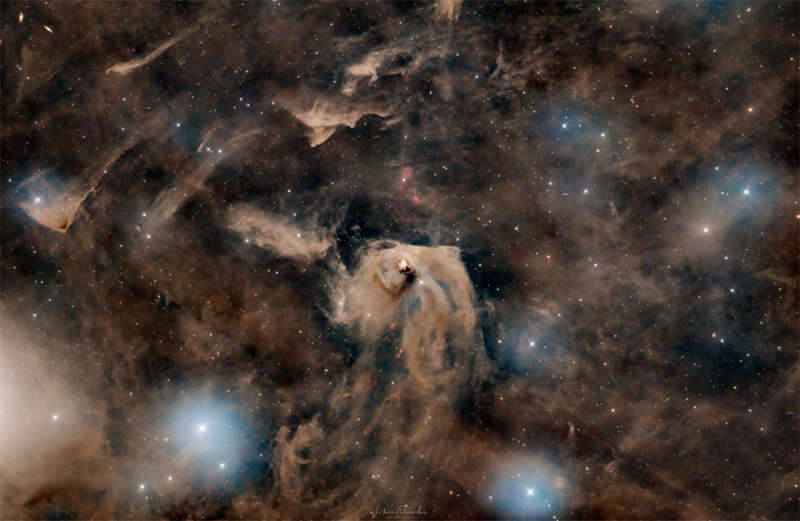Credit & Copyright: Vikas Chander
Explanation:
Can dust be beautiful?
Yes, and it can also be useful.
The Taurus molecular cloud has several bright stars,
but it is the
dark dust that really
draws
attention.
The pervasive
dust
has waves and ripples and makes picturesque
dust
bunnies,
but perhaps more importantly, it marks regions where
interstellar gas is dense enough to
gravitationally contract to form stars.
In the image center is a light cloud lit by
neighboring stars that is home not only to a famous nebula,
but to a very young and massive famous star.
Both the star,
T Tauri, and the nebula,
Hind's Variable Nebula,
are seen to vary dramatically in brightness --
but not necessarily at the same time, adding to the mystery of this intriguing region.
T Tauri and
similar stars
are now generally recognized to be
Sun-like stars that are less than a few million years old
and so still in the early stages of
formation.
The featured image spans about four
degrees
not far from the
Pleiades star cluster,
while the featured dust field lies about 400
light-years away.
1999 2000 2001 2002 2003 2004 2005 2006 2007 2008 2009 2010 2011 2012 2013 2014 2015 2016 2017 2018 2019 2020 2021 2022 2023 2024 2025 |
Январь Февраль Март Апрель Май Июнь Июль Август Сентябрь Октябрь Ноябрь Декабрь |
NASA Web Site Statements, Warnings, and Disclaimers
NASA Official: Jay Norris. Specific rights apply.
A service of: LHEA at NASA / GSFC
& Michigan Tech. U.
|
Публикации с ключевыми словами:
Taurus - star formation - Телец - звездообразование - темная туманность
Публикации со словами: Taurus - star formation - Телец - звездообразование - темная туманность | |
См. также:
Все публикации на ту же тему >> | |
